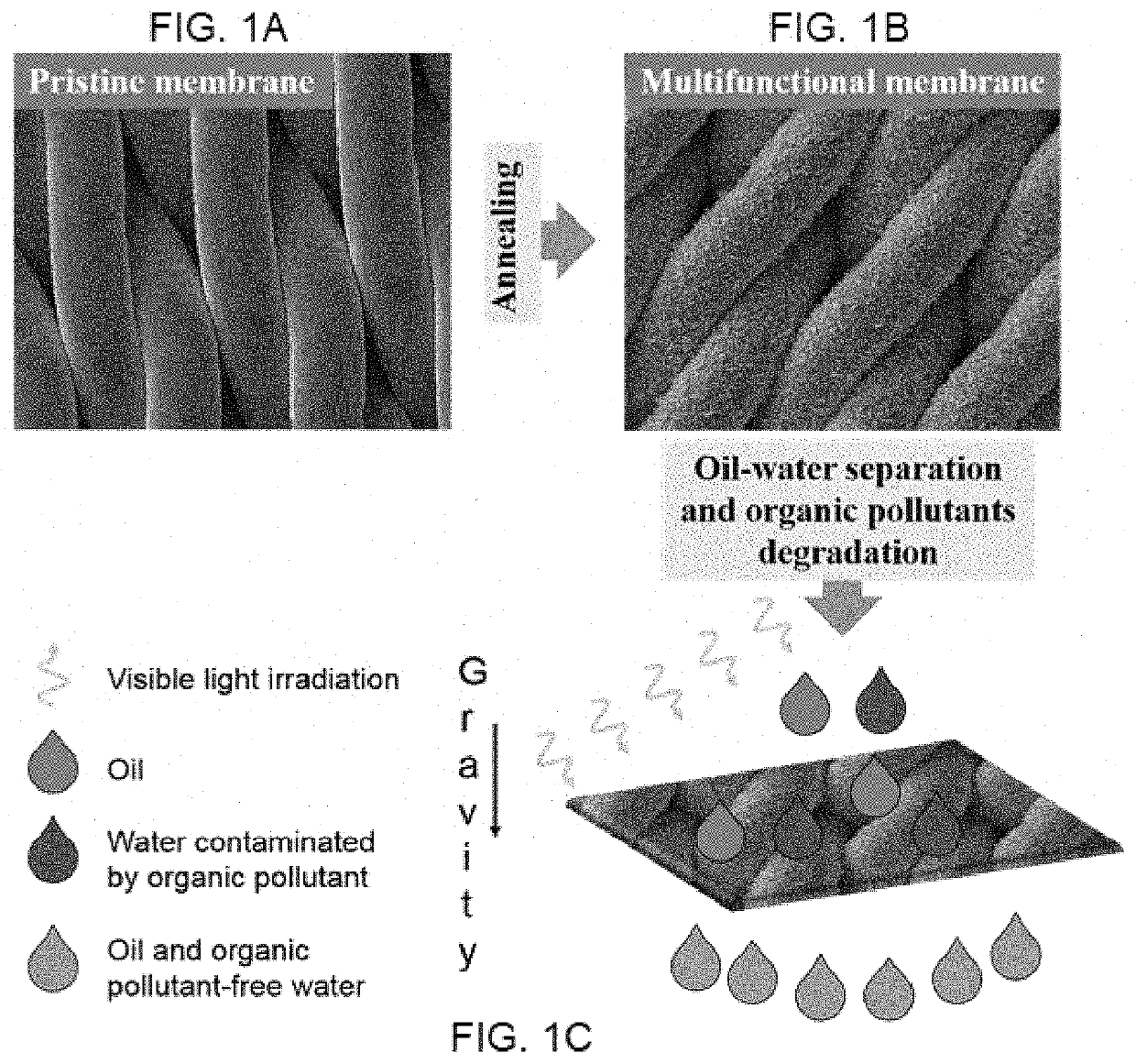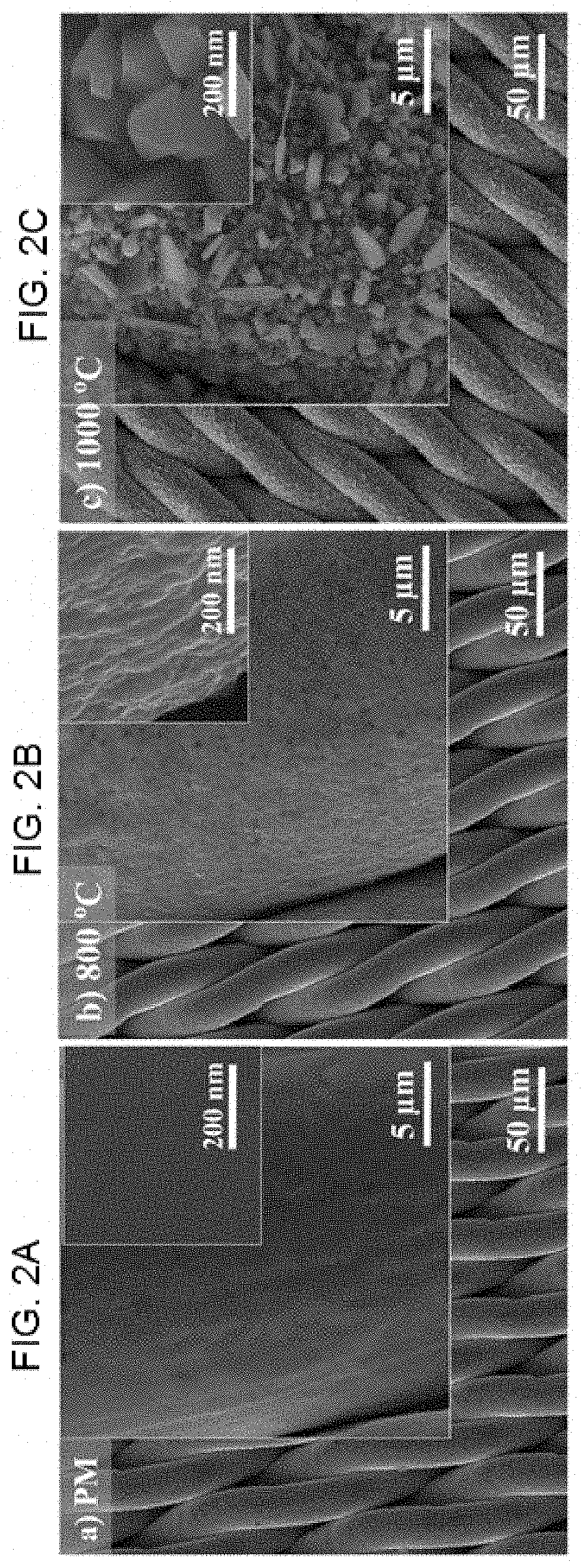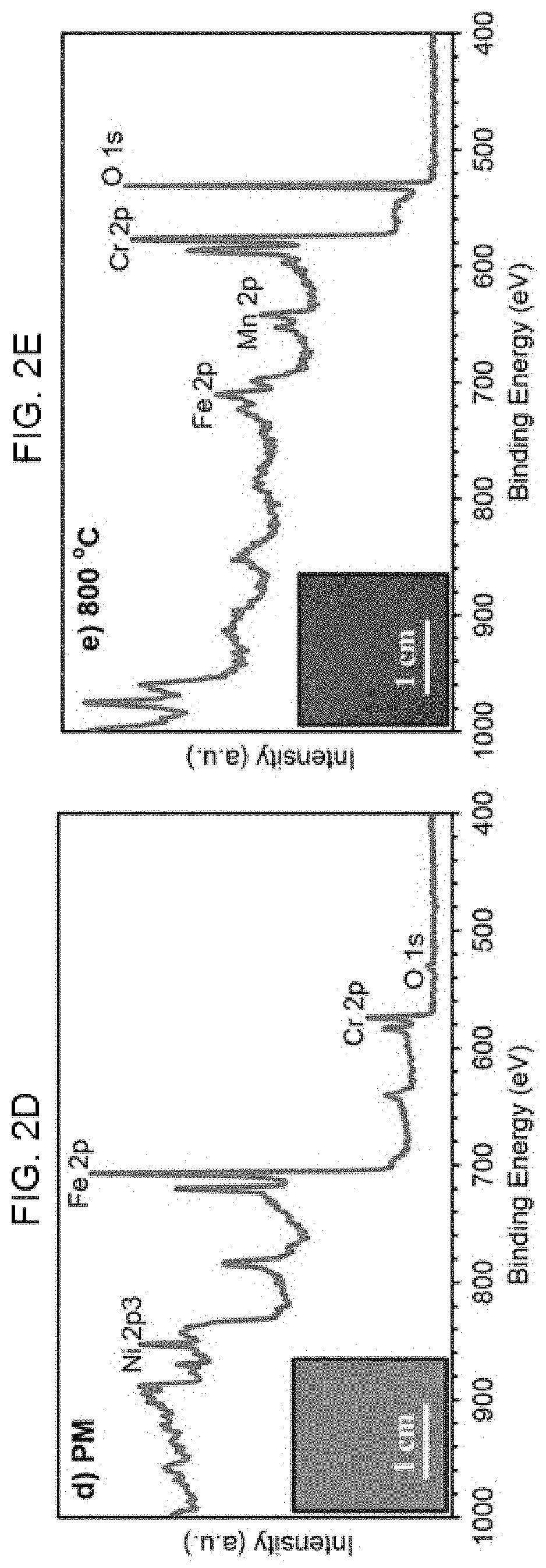One-step scalable fabrication of mechanically robust visible-light responsive oxide-modified metallic multifunctional membranes
- Summary
- Abstract
- Description
- Claims
- Application Information
AI Technical Summary
Benefits of technology
Problems solved by technology
Method used
Image
Examples
examples
[0057]Experimental Methods
[0058]The porous stainless steel membrane used to separate oil and water in this Example is a corrosion resistant annealed stainless steel (316L) square mesh of 3 cm sides, 1 mm thickness and 2 micron pore size.
[0059]Before annealing, the mesh was cleaned in an ultrasonic cleaner with deionized (“DI”) water and acetone and dried by nitrogen.
[0060]The stainless steel mesh was annealed at 1 atmospheric pressure in air and heated at 5° C. / min to a temperature of 800° C. or 1,000° C. an annealed at these temperatures for 3 hours.
[0061]The morphology and chemical compositions of the structures produced by annealing at 800° C. or 1,000° C. were evaluated using Field emission scanning electron microscope (FE-SEM, TESCAN ultra high resolution) and X-ray photoelectron spectroscopy, XPS (ESCALAB-250Xi System, Thermos-Scientific).
[0062]When a liquid drop comes in contact with the solid surface of high surface energy, then the liquid tends to spread on the surface and ...
PUM
 Login to View More
Login to View More Abstract
Description
Claims
Application Information
 Login to View More
Login to View More - R&D
- Intellectual Property
- Life Sciences
- Materials
- Tech Scout
- Unparalleled Data Quality
- Higher Quality Content
- 60% Fewer Hallucinations
Browse by: Latest US Patents, China's latest patents, Technical Efficacy Thesaurus, Application Domain, Technology Topic, Popular Technical Reports.
© 2025 PatSnap. All rights reserved.Legal|Privacy policy|Modern Slavery Act Transparency Statement|Sitemap|About US| Contact US: help@patsnap.com



